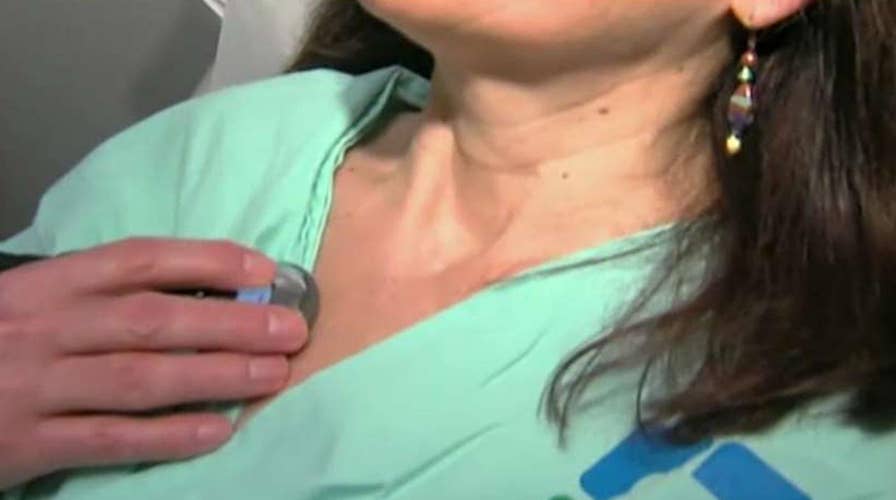'No evidence' cholesterol causes heart disease?
A team of 17 doctors claim research shows high LDL-C levels are unrelated to a higher risk of heart disease.
You may be young at heart, but your heart might be old for its age.
In fact, four out of five adults are at risk of early death due to preventable heart disease, suggests a new Heart Age Test campaign promoted by Public Health England.
“Heart disease is a largely self-inflicted disease,” Sheila Caldwell, heart attack survivor and president and founder of Heart2Heart, told Healthline. “Hopefully, knowing the ‘heart age’ is a wake-up call and, for some of our participants, it has been.”
For Caldwell, knowing her heart age changed her fate.
“Take my own case. I took my borderline screening results from before my heart attack at age 50, but my heart age was like 63,” she said. “Within a few years of doing everything we tell people to do prevent the disease, I took the screening and the heart age assessment again and at age 54… my heart age was 53. Think about that. I added 10 years to my life.”
ALCOHOL ABUSE KILLS 3 MILLION A YEAR, MOST OF THEM MEN: WHO
Nearly 2 million people have already participated in the Heart Age Test, an online tool that is similar to the American Heart Association’s My Life Check.
Both tests ask questions based on common lifestyle risk factors.
What experts have to say
Experts aren’t surprised by the Public Health England findings and confirm similar statistics in context.
“When [the American Heart Association] debuted Life’s Simple 7 and My Life Check in 2008, we found that most people thought they were in ideal health, and the reality is that most people are not… 99 percent of the U.S. adult population has at least one of the seven cardiovascular health risks,” Dr. Donald M. Lloyd-Jones, a volunteer at the American Heart Association, told Healthline.
Those risks are:
- high blood pressure
- high cholesterol
- high blood glucose
- unhealthy weight
- tobacco use
- physical inactivity
- poor diet
“I think that in this current era we live in, I wouldn’t say [the stats are] surprising,” Dr. Christine Jellis, a cardiologist at the Cleveland Clinic, told Healthline. “In our Western culture, with Western diet, and certainly the obesity epidemic, I’m not surprised by the fact that people are scoring older than their ideal heart health would be.”
Why take the test?
Taking a heart age test is simply a matter of prevention.
“Millions of people around the world continue to die from a largely preventable disease,” Caldwell told Healthline. “Denial is our biggest enemy in the fight against heart disease… It is always someone else.”
Lloyd-Jones shared similar sentiments.
“Heart disease is something that happens to other people, until it happens to you,” Lloyd-Jones told Healthline. “A test like this can help make heart disease personal before it’s too late.”
Added Jellis, “Perhaps it motivates people who perhaps don’t realize that they actually score poorly… to correct those factors or go and seek out healthcare professionals to help them reduce those risk factors. So there’s a real positive advantage to taking the test.”
However, the test has limitations.
WOMAN'S SWOLLEN PINKIE RARE SIGN OF TUBERCULOSIS
Experts say that’s why it should be used in conjunction with an official screening from a healthcare professional.
You still need to see a doctor
To receive an accurate assessment, you need to know a few individualized numbers.
This requires visiting your healthcare provider first.
“I don’t think [the online test] can be used as a replacement,” Jellis said. “You need to know your blood pressure, you need to know your cholesterol, you need to know if you are diabetic to be able to plug that into the score, so we need people to be still vigilant about having those things monitored.”
She hopes the need for those personal numbers will prompt more people to see their physicians.
What you need to know
Heart health is complex.
A healthy heart age doesn’t mean you don’t need to improve your risk factors.
“I wouldn’t want people to be sort of falsely reassured and therefore stop going and seeing their physicians, but I think to be used as an adjunct for people to be extra motivated about improving certain factors, I think that could be a very useful tool,” Jellis said.
So how do you reduce risk?
According to Jellis, “The easiest thing for people to manage is improving diet, reducing weight, and improving exercise because those things, generally, we can all do it. It’s just a matter of finding the motivation and the time to do those things.”
More specifically, she suggests following recommendations from the American Heart Association:
- Eat foods low in salt, sugar, and saturated fats.
- Do 30 minutes of exercise at least three times a week.
Jellis also encourages people to avoid smoking.
“Just by being a nonsmoker, people automatically improve their cardiovascular health so much that I think that’s also sort of important to highlight,” she said.
The American Heart Association adds, “In many cases, simple lifestyle changes like adding more color to your plate and moving more are a good start.”
For Caldwell, reducing risk is personal.
“Once you know your risk factors, take meds as prescribed and think of good nutrition and exercise as part of your heart health prescription,” she said.
“Make sure you get an adequate amount of sleep and watch the stress. By the way, this applies to your kids, too, because as we know, heart disease begins in childhood.”

